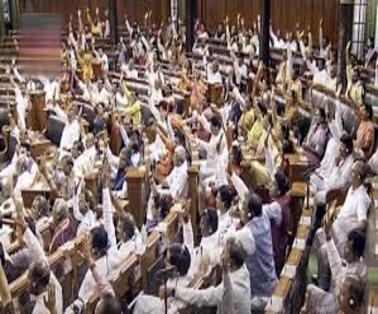Tobacco is the most widespread preventable cause of disease and death globally, posing severe health, environmental, and economic risks. India, as the second-largest consumer of tobacco after China, faces unique challenges despite multiple policy interventions, including the National Tobacco Control Programme (NTCP).
Health Impact of Tobacco Use
- Tobacco causes a wide range of diseases and affects those consuming it as well as those cultivating it.
- After China, India has the world’s highest number of tobacco consumers — nearly 26 crore, according to an estimate in 2016-2017.
- Additionally, the health of more than 60 lakh people employed in the tobacco industry is also placed at risk because of the absorption of tobacco through the skin, which can cause various diseases.
- Tobacco kills more than 8 million people each year, including an estimated 1.3 million non-smokers who are exposed to second-hand smoke.
- Around 80% of the world’s 1.3 billion tobacco users live in low- and middle-income countries.
- In 2020, 22.3% of the world’s population used tobacco
Tobacco Use in India: Statistics and Surveys
- The Global Adult Tobacco Survey (GATS), the Global Youth Tobacco Survey (GYTS), and India’s National Family Health Survey (NFHS) capture the status of tobacco use in India.
- In India, it is estimated that nearly 26 crore people consumed tobacco in 2016-2017
- The Global Adult Tobacco Survey (GATS) indicates that in India, of all adults, 28.6% currently consume tobacco either in smoked or smokeless form
- The most prevalent form of tobacco use in India is smokeless tobacco and commonly used products are khaini, gutkha, betel quid with tobacco and zarda.
- Tobacco use is recorded to be more than 40% in the North-eastern states of India, the highest being in Tripura.
- As per National Family Health Survey (NFHS) there is no significant difference in the reduction of bidi or cigarette consumption between National Tobacco Control Programme (NTCP) and non-NTCP districts.
- Tobacco use has declined in all groups, except for women where use increased by 2.1% between 2015 and 2021.
- In India, nearly 1.35 million die every year due to use of tobacco.
Environment and Economic Challenges
- Tobacco’s deleterious influence extends beyond human health. It is a highly erosive crop that rapidly depletes soil nutrients.
- This requires more fertilizers to be used which further worsens soil quality.
- The plant is also a major contributor to deforestation. Up to 5.4 kg of wood is required to process 1 kg of tobacco.
- The production and consumption of tobacco generates nearly 1.7 lakh tonnes of waste every year in India. Therefore, tobacco production and use impose a heavy economic burden on India.
- A 2021 study estimated that the country incurred a loss exceeding ₹1.7 lakh crore as a result of tobacco’s effects on the health of its consumers in the fiscal year 2017-2018.
- To compare, the Union Budget allocated for health in the same year was ₹48,000 crore.
- In addition, cleaning up tobacco waste has been estimated to cost close to ₹6,367 crore a year. These estimates exclude the costs due to soil erosion and deforestation.
India’s National Tobacco Control Programme (NTCP)
To address the tobacco epidemic, India launched the National Tobacco Control Programme (NTCP) in 2007. The NTCP works in conjunction with other legislative and international frameworks to control tobacco use.
Objectives of NTCP:
- Implement COTPA 2003 (Cigarettes and Other Tobacco Products Act).
- Promote awareness regarding the health hazards of tobacco.
- Establish cessation centers to help people quit tobacco.
- Strengthen tobacco control at the district and state levels.
Tobacco Control Laws and Initiatives
WHO Framework Convention on Tobacco Control
India is one of the 168 signatories of the WHO’s Framework Convention on Tobacco Control (FCTC), launched in 2005. It aims to reduce tobacco usage worldwide by helping countries develop demand and supply reduction strategies.
The Cigarettes and Other Tobacco Products Act
A law to govern tobacco sales in India has existed since 1975 and was amended in 2003. The Cigarettes and Other Tobacco Products (Prohibition of Advertisement and Regulation of Trade and Commerce, Production, Supply, and Distribution) Act (COTPA) 2003 has 33 sections governing the production, advertisement, distribution, and consumption of tobacco.
National Tobacco Control Program
India also launched the National Tobacco Control Program (NTCP) in 2007. NTCP is designed to improve the implementation of COTPA and FCTC, improve awareness about the harms of tobacco use, and help people quit it.
Tobacco taxation
India has implemented tobacco taxes to discourage consumption.
Prohibition of Electronic Cigarette Act (PECA), 2019
Prohibition on the sale of e-cigarettes and related products which includes Electronic Nicotine Delivery Systems (ENDS) and Heated Tobacco Products.
mCessation program
It is a mobile technology based program by Ministry of Health and Family Welfare, WHO, and International Telecommunication Union that provides customized guidance via text messages to encourage tobacco users to quit.
Challenges to Effective Tobacco Control
- Smokeless tobacco products (SLTs) have predominantly been non-compliant with COTPA packaging guidelines.
- Smuggled tobacco products — both smoked and smokeless forms — have also been badly regulated.
- To make matters worse, the fines for violating COTPA regulations have not been updated since 2003. For instance, a tobacco company is fined a maximum of only ₹5,000 for violating packaging restrictions for the first time.
- Further, while the COTPA bans direct advertisements, the position on indirect advertisements is unclear, which has allowed surrogate advertisements: they popularise the brand using a proxy product like elaichi, to promote tobacco manufactured by the same brand.
- The Indian government’s efforts to levy excise duty on tobacco have also been marred by tax evasion, such as by purchasing tobacco products in lower tax jurisdictions, and illegal methods such as smuggling, illicit manufacturing, and counterfeiting.
- Low tobacco taxes in India, which have not matched the rise in people’s income, have kept tobacco affordable over the years.
- Also, transitioning to the Goods and Services Tax regime had rendered cigarettes and SLTs more affordable.
- The National Tobacco Control Programme (NTCP) lacks the staff, resources, and proper monitoring systems to fully implement COTPA across the country.
- In a progressive move, the Prohibition of Electronic Cigarette Act (PECA), 2019 banned e-cigarettes in India — yet they continue to remain a major public health challenge in the country.
Government and Industry Interference
- Effective lobbying has led to the exemption of cess on bidis and smaller tobacco manufacturers to be continuously extended.
- Government officials, both in-service and retired, engage with the tobacco industry. For example, a retired Indian Administrative Services officer joined the board of Godfrey Phillips as an independent director in 2022.
- Moreover, the Central government holds a 7.8% stake in ITC Ltd., India’s largest tobacco company.
- India’s score on the tobacco interference index — which calculates the degree of interference by the tobacco industry in governance — has also worsened since 2021
Impact Of Tobacco Use
- Non-smokers, including children and pregnant women, are at risk due to exposure to secondhand smoke, leading to respiratory infections, low birth weight, sudden infant death syndrome (SIDS), and other health problems.
- It is a major risk factor for many chronic diseases, including cancer, lung disease, cardiovascular disease and stroke.
- Workers suffering from tobacco-related diseases are less productive, and the economic contribution of those who die prematurely is lost.
- Tobacco production and consumption generate a substantial amount of waste, including cigarette butts, packaging, and plastic waste, contributing to environmental pollution.
World No Tobacco Day
- World No Tobacco Day is observed on 31st May.
- World No Tobacco Day was created in 1987 by the Member States of the World Health Organization to draw global attention to the tobacco epidemic and its consequences.
- The day aims to inform the public about the dangers of using tobacco.
- It also encourages people around the world to claim their right to health and healthy living and to protect future generations.
- Theme for 2024: “Protecting Children from Tobacco Industry Interference”
- The day serves as a reminder of the preventable death and disease caused by tobacco use, and highlights the importance of tobacco control policies and interventions
To Download Monthly Current Affairs PDF Click here
Click here to get a free demo
Discover all about CLAT Exam



